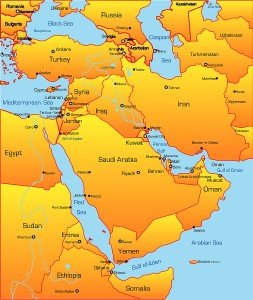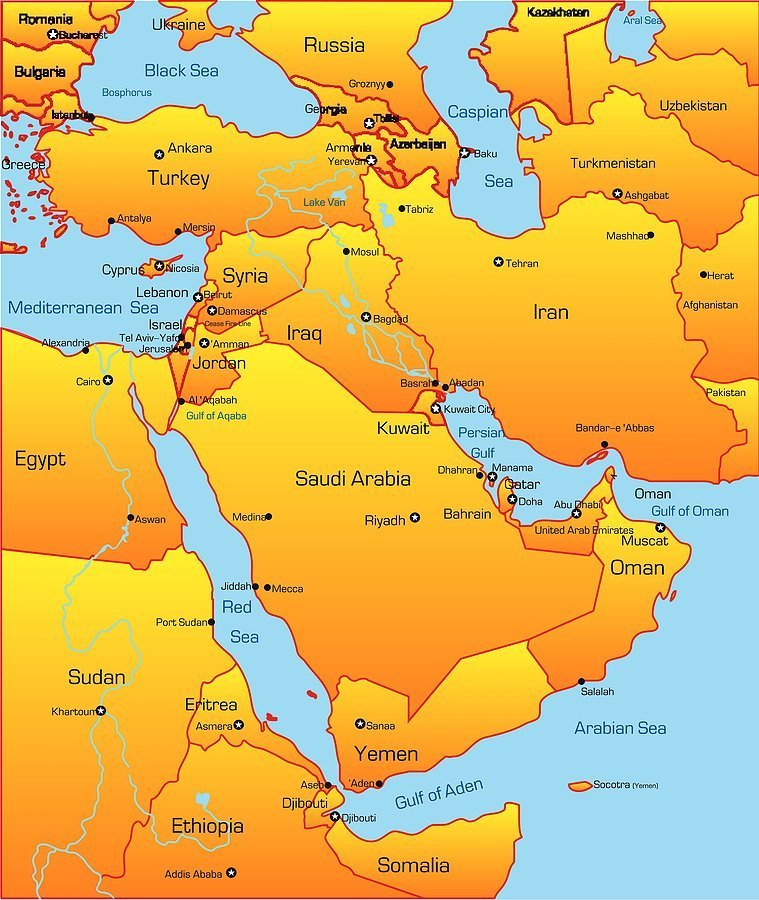01/03/2012 by Richard Weitz
On December 29, the Obama administration announced that the United States and the Kingdom of Saudi Arabia have finalized the deal to provide advanced F-15SA combat aircraft to the Royal Saudi Air Force. The sale has gained widespread support within the U.S. defense community and will likely be followed by other U.S. export deals as the United States seeks to construct a new regional security architecture in the Persian Gulf following the departure of all U.S. combat forces from Iraq last month.
Under the terms of the $29.4 billion government-to-government deal, the Royal Saudi Air Force will be able to acquire 84 new Boeing Co. F-15SA combat aircraft to replace its aging fleet of F-16C/Ds, acquired from 1978 to 1992. Boeing will also modernize Saudi Arabia’s 70 existing Saudi F-15S strike aircraft, perhaps with longer-range missiles mated to these Saudi-adopted version of the Boeing F-15E. U.S. companies will also provide Saudi Arabia with munitions, spare parts, maintenance and logistics related to these systems as well as training for Saudi pilots and air crews.

In detailing the sale to reporters, James Miller, principal deputy undersecretary for policy in the Department of Defense, said that Boeing would equip the F-15s provided Saudi Arabia with the latest computers, radars, sensors, and electronic warfare systems that would make the planes “one of the most capable aircraft in the world.”
For example, the planes would include Raytheon’s advanced active electronically-scanned array radar (AESA), Harpoon missiles to attack maritime targets; the AGM-88B High-Speed Anti-Radiation Missile (HARM) anti-radiation missile for destroying adversary radars, and AMRAAM and AIM-9X air-to-air missiles in aerial combat.
The F-15SAs will be capable of striking targets with a variety of precision-guided munitions such as 500-lb. dual-mode laser-guided munitions, 2,000-lb. Paveway III laser-guided bombs, 2,000 lb. Joint Direct Attack Munitions (JADMs), and the Sensor Fuzed Weapon with a Wind Corrected Munitions Dispenser for targeting moving vehicles. Other sources indicate the F-15SAs would come with Goodrich DB-110s (the international version of the Senior-Year Electro-Optical Reconnaissance System), Sniper and Lantirn targeting and navigation pods, and the Digital Electronic Warfare System.
The proposed sale had been under discussion since 2007. The Saudi government formally requested a $60 billion arms package in April 2010. Later that year, the Defense Security Cooperation Agency formally notified the Congress of its plans to sell Saud Arabia some $60 billion in arms during the next decade. The delivery of the entire package could extend 15-20 years until the Saudis receive their last purchase.
The Congress declined to cancel or amend the sales within the 30-day window provided for by the legislation. Such notifications to Congress are required whenever the executive branch is preparing to sell military goods to a foreign government through the Defense Department’s Foreign Military Sales program.
By not opposing the sale, Congress effectively authorized an aggregate ceiling of $60 billion on the value of all the possible weapons systems and related defense items Saudi Arabia could potentially buy from the United States. Since then, representatives of the two governments and their companies have been negotiating the details of specific transactions.
It was only on December 24 that the United States and Saudi Arabia finalized and signed a formal letter of offer and acceptance for the warplane sale, completing the last official step in the government-to-government part of the arms sales process.
Saudi Arabia will begin paying for the planes now in installments and receive its first upgrades in 2014 and its first new F-15s around 2015. The delays reflect Saudi Arabia’s limited absorption capacity, its financial prudence given the volatility of world oil prices, the death of Crown Prince Sultan bin Abdul Aziz and the need to designate his successor as heir to the Saudi monarchy, and the time needed to manufacture the planes, prepare Saudi infrastructure to receive the weapons, and train the Saudi operators to use the new systems.
In terms of the scale and cost, this proposed deal dwarfs recent U.S. military sales to Saudi Arabia.
In 2010, for instance, Saudi Arabia signed contracts for support and spare parts for Abrams M1A2 and M1AS tanks worth $384 million and contracts for F-15 combat aircraft worth $230 million. Saudi Arabia bought more U.S. weapons during the 2007-2010 period than any other country, with the value of all signed agreements amounting to $13.8 billion, followed by the United Arab Emirates with $10.4 billion. But the last sales of such a large magnitude were the 1981 sale of AWACS (Airborne Warning and Control System) and the $9 billion 1992-1993 sale of 72 earlier model F-15s.
Since the planes will amount to only half the $60 ceiling approved by Congress, we might expect further U.S.-Saudi arms sales announcements this year. These large weapons systems could include 70 new AH-64D Longbow Apache attack helicopters and upgrades to Saudi Arabia’s existing AH-64As; additional UH-60 Black Hawk utility helicopters (to supplement Saudi Arabia’s existing 22 UH-60s); 36 AH-6i Light Attack Helicopters and 12 MD Helicopters MD-530Fs; and upgrades to Saudi Arabia’s current arsenal of Patriot Advanced Capacity-2 (PAC-2) air and missile defense systems. Saudi Arabia and the United States have already signed a letter of agreement to provide 36 of the planned Apache AH-64D Longbow attack copters to the Saudi military.
The White House estimates that the agreement would sustain some 50,000 jobs for Americans as well as provide a general $35 billion boost to the U.S. economy. Shapiro elaborated that the some 600 suppliers in 44 states would benefit from the sale. “This will support jobs not only in the aerospace sector but also in our manufacturing base and support chain, which are all crucial for sustaining our national defense.”
It should be noted that Saudi Arabia’s Alsalam Aircraft Company will undertake some of the refurbishing of older F-15s and some structural subassembly fabrication in Saudi Arabia.
Many of these jobs would result from keeping Boeing’s St. Louis F-15 production line working until at least 2020, providing a bridge until the next major order occurs, The sales would partially compensate for the cancellation of several planned purchases from Boeing by the Pentagon in recent years.
Boeing has an “enduring partnership” with Saudi Arabia, which in past decades has acquired earlier model Boeing F-15s, Apache helicopters, AWACS, special mission aircraft, and other Boeing products.
Company Chairman, President and CEO Jim McNerney welcomed the announcement, noting that, “For Boeing, this agreement represents the continuation of an enduring partnership between the company and the Kingdom …. We appreciate the efforts of the Obama Administration and the trust of King Abdullah’s government in finalizing the agreement, which will support tens of thousands of American jobs and help the Kingdom enhance its defense capabilities and diversify its workforce.” He added that, “Boeing views Saudi Arabia as a market with great potential and has made it a priority to invest in Saudi Arabia’s aviation industry while working to strengthen local technical and vocational training programs and institutions.”
Boeing has sought to expand its international sales in compensation and in anticipation of further reductions in U.S. defense spending. Five years ago, only 7 percent of Boeing’s business was outside the United States, whereas by 2010, this level had reached 18 percent. Boeing would eventually like to raise this total to 25-20 percent of its production.
But Boeing may not be able to continue relying on F-15 variants for long. Japan recently chose to purchase the F-35 instead, and South Korea looks set to follow its example. Boeing has also not found any buyers of its Silent Eagle variant, which includes internal weapons bays using a conformal fuel tank design and 15-deg. canted V-tails.
But Boeing has recent Pentagon wins, aside from the tanker deal. For example, the Pentagon has recently awarded Boeing a multi-billion dollar contract to support its ballistic missile defense efforts. Boeing, teamed with Northrop, beat Lockheed Martin teamed Raytheon to win the $3.48 billion, seven-year contract that it previously held on a sole-source basis.
Boeing will also be in a strong competitive position to sell the military new unmanned systems as well as bid for the new long-range strategic bomber the Pentagon wants to build in coming years.
Editor’s Note: The Saudis have purchased the Euroffighter and this formidable aircraft is crucial as well as European weapons. Indeed, a key question is how the Iranian challenge plays out and what Europe and the US actually do to support Arab allies as well as the Israelis. The Israelis for one believe that the F-22 is crucial to air superiority in the region and the key effort by Secretary Gates to block deployments to the region have lingering effects. When does the F-22 become part of the deterrence of Iran in the region?


